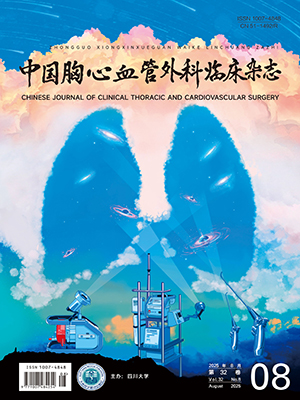We reported a 59-year-old male with exertional angina pectoris, and the coronary angiography showed multiple vessel lesions. The initial strategy was coronary artery bypass grafting (CABG). The measurement of quantitative flow ration (QFR) before operation indicated that the posterior descending branch (PD) did not need to be treated. The left circumflex branch (LCX) was small, and the QFR of the left anterior descending branch (LAD) and the first diagonal branch (D1) was<0.8. Therefore, the LAD and D1 were re-vascularized. The operation strategy was changed to on-pump CABG through a small incision, and the final strategy was LIMA-D1-LAD (sequential), fractional flow reserve (FFR) of distal LAD and D1 after CABG were>0.8 by computed tomography FFR. SYNTAX scores after CABG were 20 and the functional SYNTAX scores after CABG were 3, indicating a good prognosis.
Citation: SHUANG Dongsi, FU Jun, WANG Jiangyou, YU Chunjun, HUA Zhengdong. Totally arterialized minimally invasive coronary artery bypass grafting under the guidance of coronary artery function: A case report. Chinese Journal of Clinical Thoracic and Cardiovascular Surgery, 2024, 31(4): 634-638. doi: 10.7507/1007-4848.202208004 Copy
Copyright © the editorial department of Chinese Journal of Clinical Thoracic and Cardiovascular Surgery of West China Medical Publisher. All rights reserved
-
Previous Article
Giant extralobar pulmonary sequestration with severe pleural effusion in neonatal period: A case report ZHOUYuxuan, LIN Hang, ZHANG Chunfang, FU Yimei, CHENG Yuanda -
Next Article
Insertion of a totally implantable venous access port in a patient with isolated persistent left superior vena cava: A case report ZENGZhikai, ZOU Guowen, YU Bentong




